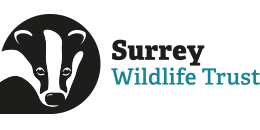How you've helped heathlands
On many of our heathland sites, including Chobham Common and Whitmoor Common, we’ve used the winter months to carry out extensive scrub clearance, removing selected trees like Scots Pine and also reducing the cover of dominant species including Gorse and Silver Birch to create a more open and varied landscape – essential for ground-nesting birds and reptiles, as well as the diverse array of wildflowers that provide essential food for pollinating insects and the creatures that feed on them.
We’ve also invested in measures to increase resilience against wildfires – including by creating new firebreaks on sites like Chobham Common, including pathways consisting of either heavily mown vegetation or bare ground. Roads, rivers and other vegetation free features can also act as firebreaks.
SWT Conservation Manager Adam Bolton says:
"This could be essential insurance against the threat we expect to encounter in the years ahead, with temperatures likely to reach record peaks in the summer months."
Thanks to the generosity of everyone who donated to our 100 for Heathlands fundraiser over the Christmas period, those who donate when they can or join us as members, and the tenacious volunteers who join us in all weathers, we’ll be able to maintain this essential annual rhythm of careful maintenance, keeping some of the UK’s most delicate and wildlife-rich habitats in good condition for nature.
Birds bouncing back
Not least because of the habitat restoration work your support is enabling, recent census data covering the Thames Basin Heaths - the collection of heathlands to the west of London and including many managed by SWT - has revealed some highly promising results for ground-nesting heathland birds.
Surveys carried out by a variety of organisations and collated for Natural England, the UK's regulatory body for the environment, showed increases in the numbers of breeding Dartford Warblers (590 pairs, a 33 per cent increase on the baseline survey data of 1997), Woodlark (220 pairs, a 47.7% per cent increase on the 1997 data) and Nightjars (422 pairs, a 60 per cent rise since 1997).
As climate patterns in the UK and around the world shift with alarming speed, we can’t take this progress for granted (and different species will of course be affected in differing ways) - but it’s hugely encouraging to see all of these threatened birds doing comparatively well. All of these birds need structurally diverse, insect-rich heathland to breed successfully, and we will maintain and expand our efforts to ensure that Surrey’s wild places offer safe and abundant nesting, resting and feeding opportunities for these wonderful species.
Still more to do…and a vision for the future
Our work never stops, and neither does our campaign to Save Surrey's Nature. Watch the below video, created by animator, illustrator and Kingston School of Art alumni, Olivia Thornton.


